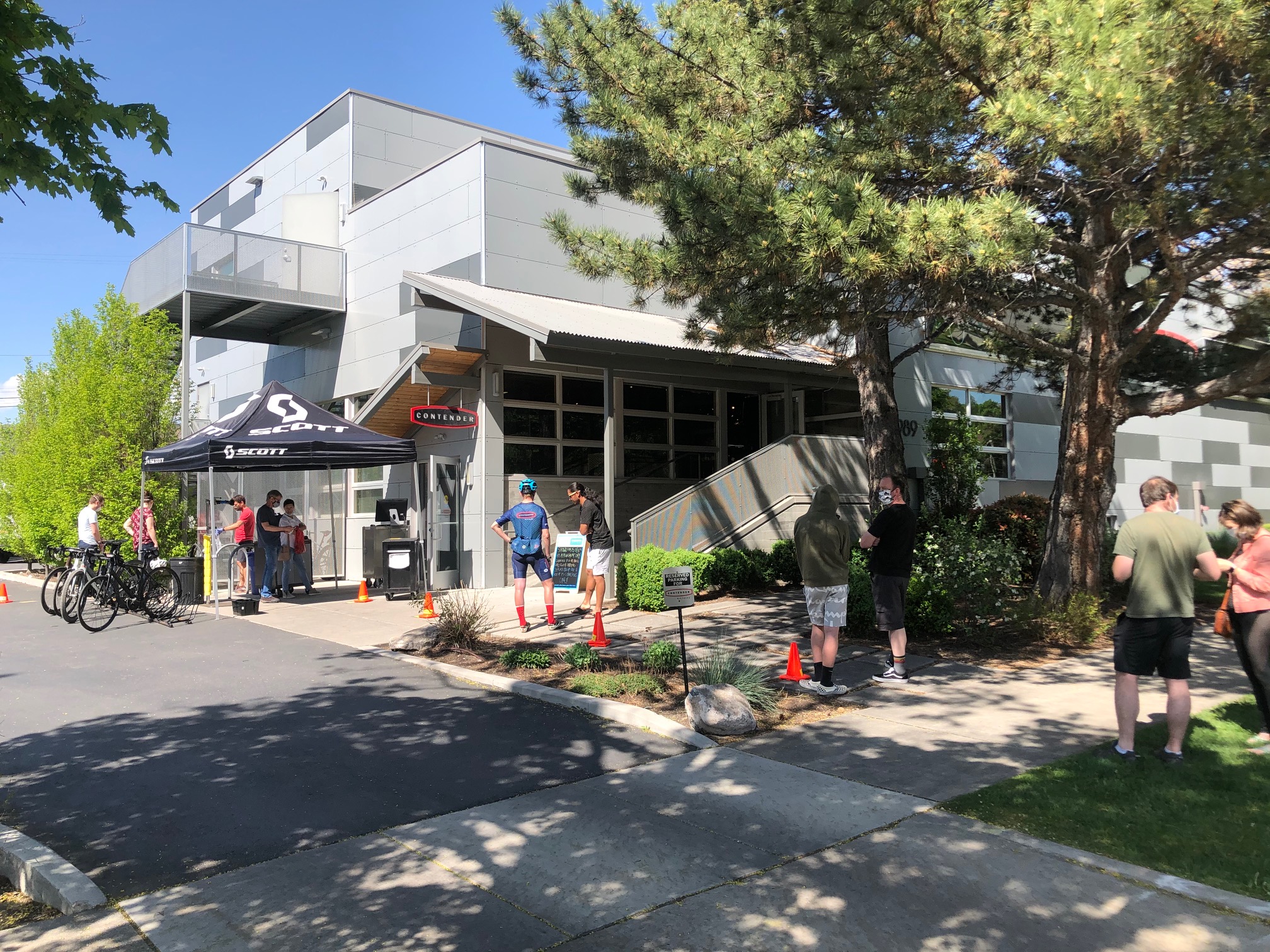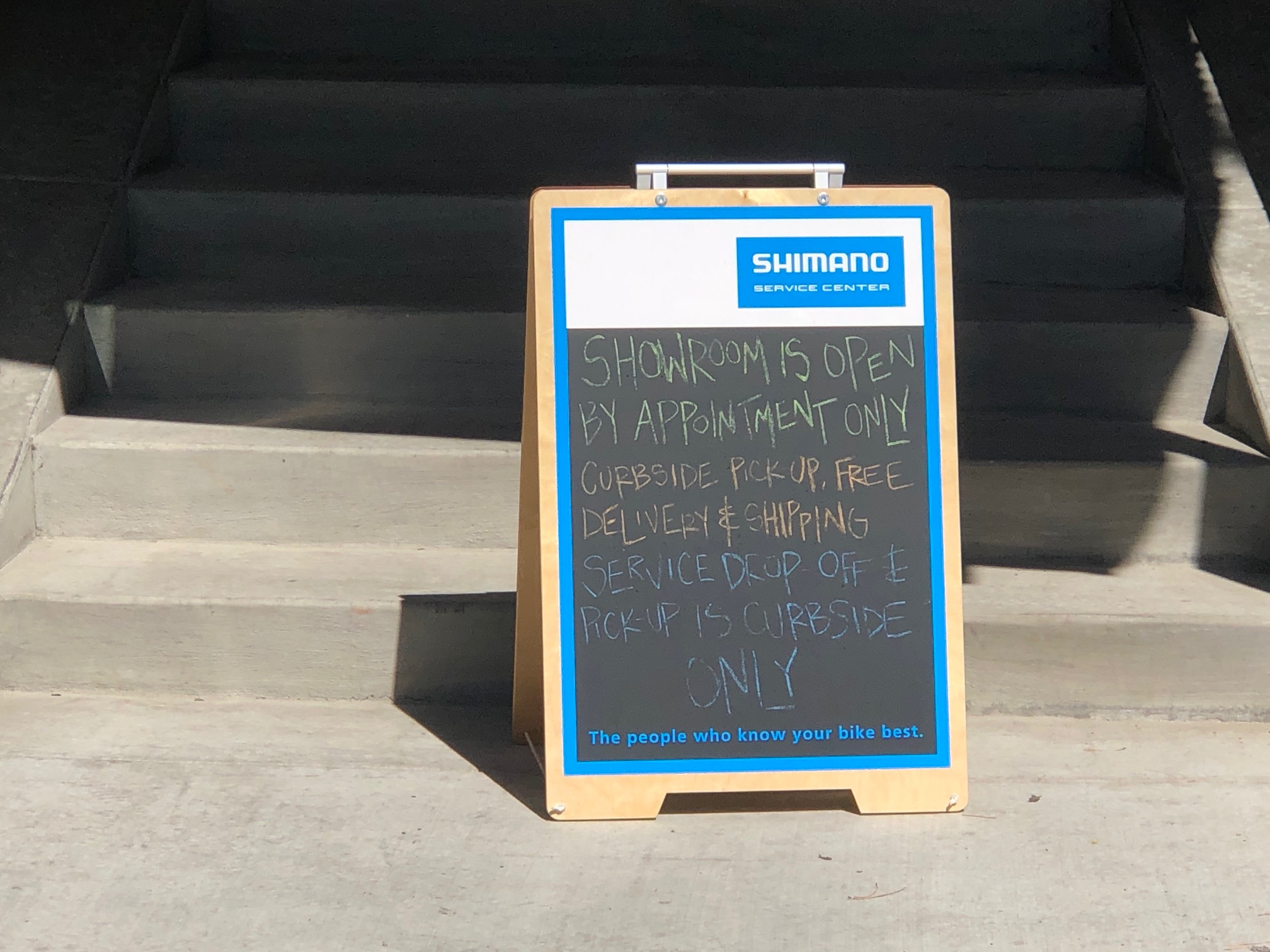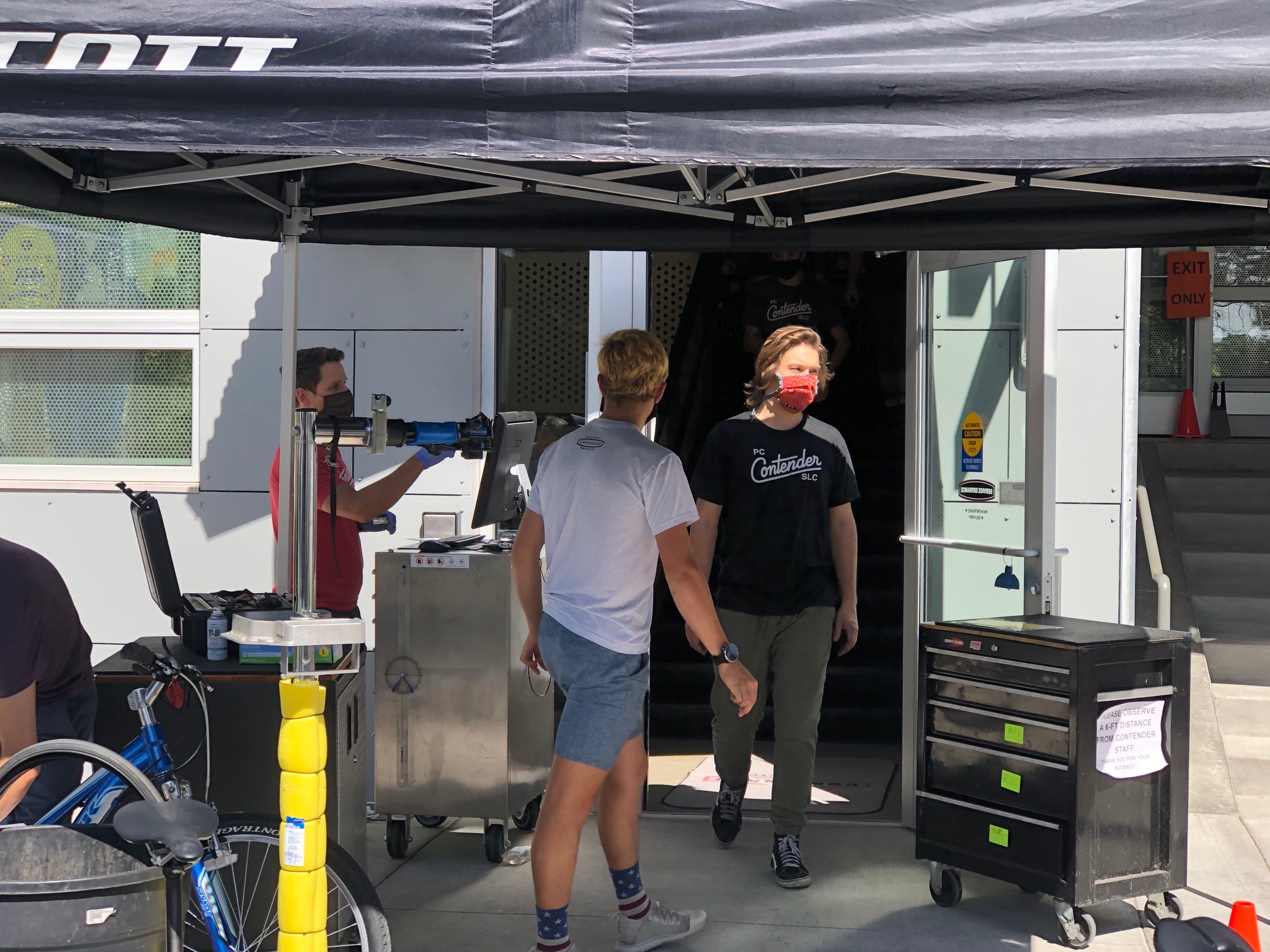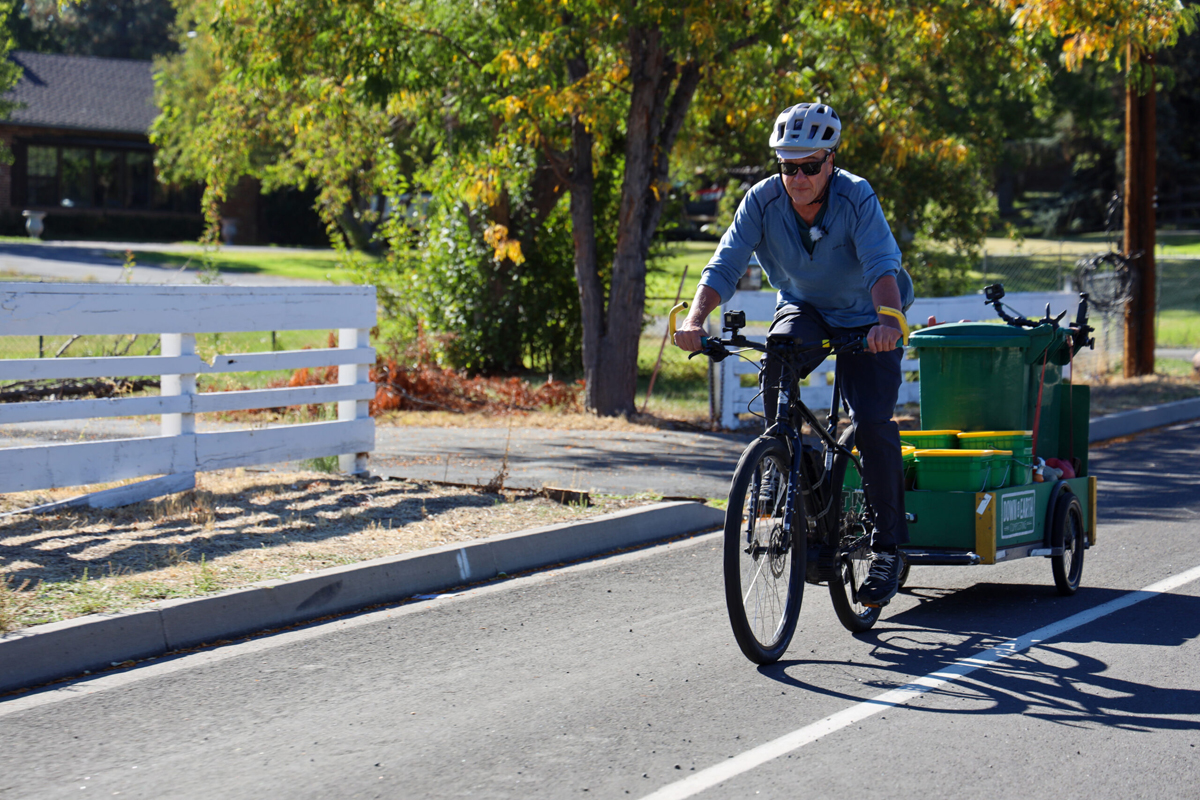By Salt Lake Valley Trail Society — We have developed this guide for bicycle retailers in an effort to keep the bicycle community safe during this pandemic. In consultation with the Salt Lake County Health Department, these protocols meet or exceed all current CDC and CISA recommendations and are designed to allow for the continued operation of your essential business. Please use this as a guide and stay current with the health department and CDC recommendations.

Protecting Customers
As much as possible, interact with customers outside.
Staff dealing with customers should maintain a 10-foot distance.
Staff dealing with customers indoors should wear masks (This is consistent with the Utah Leads Together 2.0 recommendation for all retail businesses that employees should wear face coverings).
Customers should be limited to 1 per 500 square feet of retail showroom space.
In order to minimize the number of customers in the store you might consider:
-
- Pick-up and delivery service
- Locked door policy (staffed or phone and we will answer door)
- Appointment only showroom
- Use outdoor repair check-in and pick-up, sales and service as much as possible
Conduct daily sanitizing of retail space including phones, countertops, door handles, tools, pumps, bathrooms and other surfaces that customers may come in contact with.
Encourage card payment methods with machine sanitization after each use.
Have hand sanitizer or other sanitizing readily available for customers and employees.
Post a sign requesting that customers with Covid symptoms not enter the store.
When exchanging paper and coin money:
-
- Do not touch your face afterward.
- Ask customers to place cash on the counter rather than directly into your hand.
- Place money directly on the counter when providing change back to customers.
- Wipe counter between each customer at checkout.
Move the electronic payment terminal/credit card reader farther away from the cashier in order to increase the distance between the customer and the cashier, if possible.
Consider the use of screens in checkout and cashier locations.

Protecting Employees
Limit employees to 1 per 500 square feet or 1 per room (bathrooms, storage and changing rooms excluded), whichever is greater.
Maintain 10-foot distancing for employees.
Avoid having employees work across from each other.
All bicycle contact surfaces should be sanitized before and after service.
Demo/rental and test ride bikes should be cleaned and sanitized after use.
Screen and identify employees with symptoms of illness consistent with COVID-19 and send them home.
If tested, don’t allow employees to work until test results have been received and employee verified as negative.
Discourage handshaking – encourage the use of other non-contact methods of greeting.
Reinforce key messages about coughing and sneezing etiquette and proper, regular handwashing.
Disinfect and clean regularly common surfaces, such as counters, work areas, door handles, doorknobs, railings. (Depending on the shop being open and type of shopping this may need to be hourly, whereas if an appointment you know areas that have been contacted).
Use signs, markings, tape or other means to ensure employees and customers maintain appropriate social distancing, including in lines.
Have hand sanitizer or other sanitizing readily available for customers and employees.
Encourage and make available masks and gloves for employees, even if they don’t deal with customers.
Workers should be encouraged to work remotely when possible and focus on core business activities (at-home bicycle assembly?). In-person, non-mandatory activities should be delayed until the resumption of normal operations.
Consider the impact of workplace sick leave policies that may contribute to an employee decision to delay reporting medical symptoms. Sick employees should not return to the workplace until they meet the criteria to stop home isolation.
Conduct frequent cleaning of employee break rooms, rest areas, and other common areas.
Implement a system in which workers rotate into the cashier station to allow cashiers to leave the station to wash their hands regularly.
Remove or rearrange chairs and tables or add visual cue marks in employee break rooms to support social distancing practices between employees. Identify alternative areas such as closed customer seating spaces to accommodate overflow volume.
Be aware that some employees may be at higher risk for serious illness, such as older adults and those with chronic medical conditions. Consider minimizing face-to-face contact between these employees or assign work tasks that allow them to maintain a distance of ten feet from other workers, customers and visitors, or to telework if possible.
Inform employees who are well but who have a sick family member at home with coronavirus should notify their supervisor and refer to CDC guidance for how to conduct a risk assessment of their potential exposure. If an employee is confirmed to have coronavirus, employers should inform fellow employees of their possible exposure in the workplace but maintain confidentiality as required by the Americans with Disabilities Act (ADA).

Protecting vendors/deliveries
Maintain 10-foot minimum distancing.
Minimize or eliminate in person gatherings of vendors and employees occurring for marketing and product education purposes.
Accept shipments out of doors.
Utilize gloves when signing for, receiving, unpacking and handling goods.
Why are we recommending 10 foot distancing and masks?
More information available:
See for disinfectant methods:








